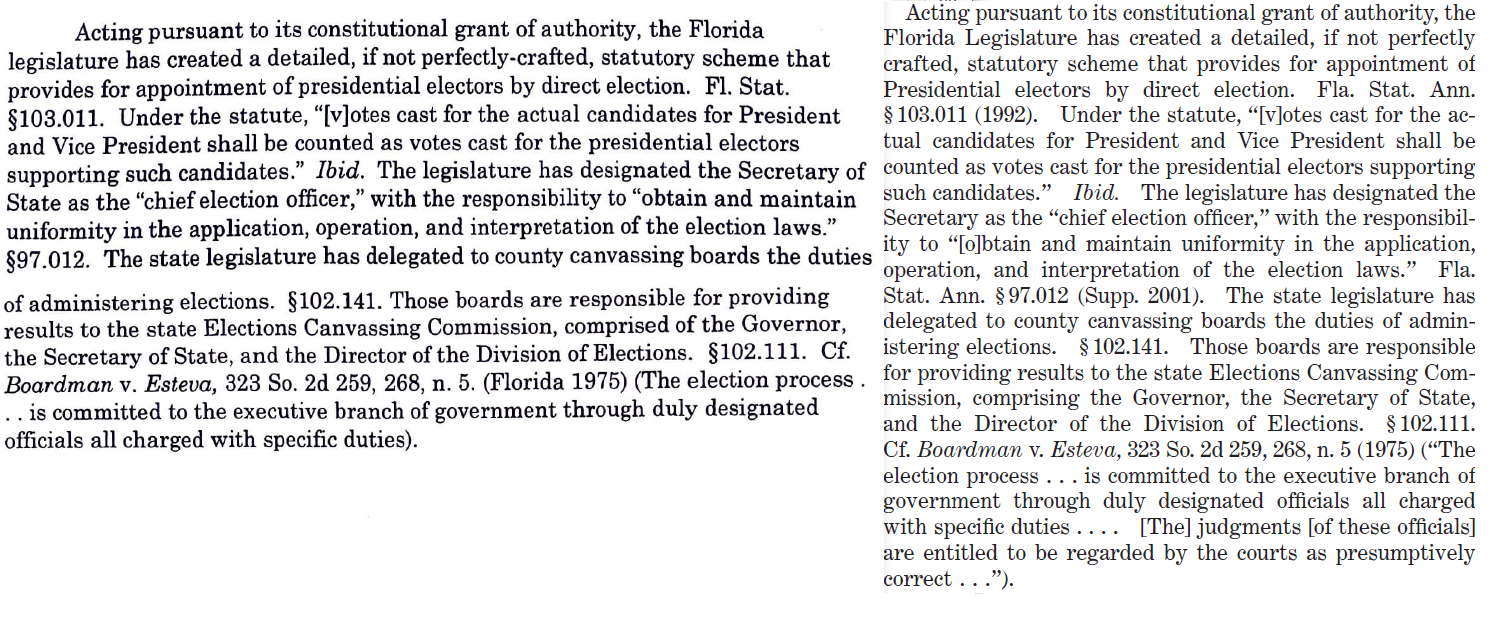Many of the papers of the late Justice John Paul Stevens have been released, including papers from Bush v. Gore. Over at CNN, Joan Biskupic has a four-page memorandum that Justice Sandra Day O’Connor circulated to the justices before oral argument. The text of that memorandum is here. Biskupic reports the memo “provided the early framework that steered the outcome in the dispute over the 2000 presidential election,” but that’s not accurate–in fact, it gets it exactly backwards. O’Connor’s memo provided the template for Chief Justice William Rehnquist’s opinion, which ultimately became the concurring opinion. When Justice Anthony Kennedy shifted to an Equal Protection rationale, O’Connor later joined him–and abandoned her own draft.
O’Connor’s memo never mentions the Equal Protection Clause. But she opens with Article II: “Our Constitution vests each state legislature with plenary authority to direct the manner of the appointment of that State’s presidential electors. Art. II, §1, cl. 2; see also Bush v. Palm Beach County Canvassing Bd., 531 U. S. __ (2000); McPherson v. Blacker, 146 U. S. 1 (1892). This power is expressly granted to the ‘Legislature’ of each State and not to any other arm of state government. Art. II, §1, cl. 2. As a result, any significant deviation from the state legislature’s scheme for appointing presidential electors presents a federal constitutional question.” And she concludes, “I am concerned that the Florida Supreme Court transgressed the lines of authority drawn by Article II of the Federal Constitution in substantially changing the state legislature’s statutory scheme for the appointment of presidential electors.”
This is precisely the rationale pressed in Rehnquist’s concurring opinion. In fact, Rehnquist’s opinion in Bush v. Gore lifts entire paragraphs from O’Connor’s memo. Here are four such paragraphs, side by side (O’Connor’s December 10 memo on the left, Rehnquist’s concurring opinion on the right):




Rehnquist’s opinion borrows other arguments from O’Connor’s memo, too. You can read through to see how similar the argument is structured.
That’s not to say O’Connor’s memorandum was only limited to influencing Rehnquist’s opinion. Her language influenced the per curiam opinion, too. For instance, O’Connor noted in her memorandum, “The county canvassing boards were forced to pull together ad hoc teams comprised of judges from various circuits who had no previous training in handling and interpreting ballots. Furthermore, while others were permitted to observe, they were prohibited from objecting during the recount.” That exact language was put into the per curiam opinion as an Equal Protection concern, instead of a concern of deviating from the legislature’s statutory scheme.
But it is to say that O’Connor set out the framework and the heart of the language in an opinion Rehnquist hoped to write on behalf of the Court. Once Kennedy rejected the argument and moved in a different direction, however, O’Connor shifted to Kennedy’s view, abandoning her own argument and leaving it to Rehnquist to make the argument in his name.